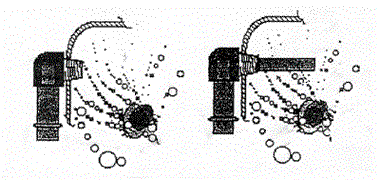[Right] The "normal" installation, as built, showing how the breather fitting is pointed vertically downward form the crankcase.


[Right] Comparing the stock breather tube to the modified breather tube. The modified version has an approximate 2-¾ inch extension that is inserted into the breather tube cavity on the crankcase.
[Right] This view of the right half of the crankcase shows the modified breather fitting installed. The extended breather tube is still recessed within the cavity and does not interfere with any component engine parts.

[Left] Continental's cure was to modify the brass right-angle breather tube fitting (Part No. AN 842-10) that screws into the top right-hand corner of the engine and attaches to the hose leading to the breather tube. The modification attaches a tube to the end of the fitting, which goes into the engine. The purpose of displacing the pickup opening of the fitting is to "hide" the opening from the droplets of oil flung by the cam and the front bearing.
On the left, a stylized view of the oil droplets flung toward the opening of the breather's AN fitting. Some of the droplets are captured in the fitting and are blown out the breather and onto the belly. On the right, the extension is shown and indicates how its opening is not subjected to the ingestion of the droplets of oil.

